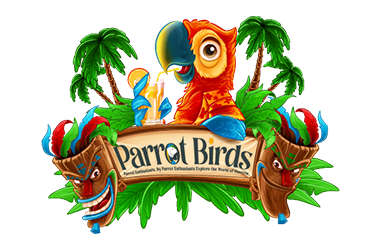Menu Home Parrot Macaw Parrot Cockatoos Parrot Cockatiel Parrot Care...
Read More


Rainbow Lorikeet
A Comprehensive Guide to Care, Behavior, and Vibrant Companionship
Introduction
The Rainbow Lorikeet (Trichoglossus moluccanus) is a dazzling and charismatic parrot species known for its vibrant plumage, playful nature, and lively personality. Native to Australia, these colorful birds have become popular pets worldwide due to their captivating appearance and engaging behavior. In this guide, we will explore the essential aspects of caring for Rainbow Lorikeets, understanding their behavior, and fostering a dynamic and joyful relationship with these enchanting feathered companions.
Distinctive Physical Features
Rainbow Lorikeets are named for their strikingly colorful plumage, featuring a spectrum of bright hues including red, blue, green, and yellow.
Their vibrant appearance, coupled with a curved beak and a unique brush-like tongue, sets them apart in the world of parrots.
Habitat and Cage Requirements
Provide a spacious and secure aviary or cage with room for flying and climbing.
Lorikeets are active birds, and including perches, swings, and toys will keep them physically and mentally stimulated.
Nutritional Needs
Rainbow Lorikeets have a specialized diet that includes nectar, fruits, vegetables, and a small portion of high-quality lorikeet pellets.
Regular access to fresh water is crucial, and owners should be mindful of the need for dietary variety.
Socialization and Bonding
Rainbow Lorikeets are highly social birds that thrive on interaction with their human caregivers.
Spend quality time talking, playing, and engaging in activities to build a strong bond with these lively and affectionate birds.
Training Techniques
Positive reinforcement methods work well for training Rainbow Lorikeets.
Teach basic commands, encourage flight training, and offer interactive toys to keep their intelligent minds engaged.
Common Health Considerations
Regular veterinary check-ups are essential for monitoring overall health.
Lorikeets are prone to specific health issues, including obesity and beak and feather disease, so owners should be vigilant for signs of illness.
Vocalizations and Playfulness
Rainbow Lorikeets are known for their playful and chatty nature.
They can be quite vocal, mimicking sounds and words, adding an entertaining aspect to their already lively personalities.
Enrichment and Mental Stimulation
Provide a stimulating environment with toys that encourage problem-solving and physical activity.
Rotate toys regularly to prevent boredom and keep the lorikeet’s curious mind engaged.
Legal Considerations
Check local and international regulations regarding the ownership and trade of Rainbow Lorikeets.
Some regions may have restrictions to ensure responsible ownership and prevent potential ecological impacts.
Conclusion
Rainbow Lorikeets are not only visually stunning but also charismatic and affectionate companions.
By understanding their unique needs, providing proper care, and investing time in socialization, individuals can experience the joy of having these lively and colorful birds as cherished members of their families.
In conclusion, caring for Rainbow Lorikeets involves creating an enriching environment, promoting social interaction and mental stimulation, and ensuring their overall well-being. With dedicated care and attention, Rainbow Lorikeets can become cherished companions, bringing color, energy, and affection into the lives of their human caregivers.
Budgerigars Unveiled
Menu Home Parrot Macaw Parrot Cockatoos Parrot Cockatiel Parrot Care...
Read MoreAll rights reserved . Copyright © 2024 parrot-birds.com







